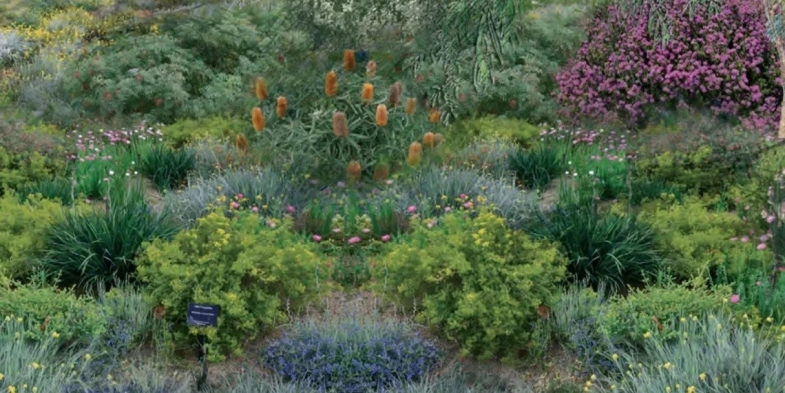Typical low maintenance plantings on public land have low diversity, visual appeal and function. Monocultures of strappy plants such as Lomandra longifolia and Dianella or single shrub species like saltbush are often the plants of choice that provide little contribution to biodiversity.
Since 2015 Melbourne University, in collaboration with the University of Sheffield, has been trialling a novel low-cost and resilient approach to urban greening, using natural shrubland structures as templates to create beautiful, diverse plantings of Australian shrubs which are maintained through coppicing.
The idea is that coppicing (hard pruning to 10 to 20 cm high) every two to four years will promote flowering and rapid canopy closure to exclude weeds and reduce maintenance. With their high number of flowers, woody meadows encourage insects such as native bees, small birds and other wildlife.
Woody meadows are highly adaptable and can be used in a wide range of urban settings including railway easements and roadside verges, roundabouts, parks and gardens, and as part of water sensitive urban designs like raingardens and retention basins. Their low water use and maintenance requirements, coupled with high visual appeal and adaptability make them an attractive, cost-effective solution for councils and urban land managers challenged by climate change and often limited green space funding.
Councils, government agencies and developers are embracing this idea, with more than 6,000 m2 of woody meadows established around Australia that include approximately 40,000 plants from 150 different species.
With more 25,000 m2 of plantings planned for 2023, you’ll likely be seeing woody meadows popping up in your neighbourhood soon.
In August council’s environmental staff and 14 local volunteers planted 400 tube stock in Transmission Park in St Ives Chase to create the trial woody meadow. The plantings will develop over the next 12 to 18 months and staff will monitor the site to test whether biodiversity is increasing through more sightings of insects, birds and animals.
The evidence from this initial planting will help decide whether to extend woody meadows to other public land in Ku-ring-gai.

